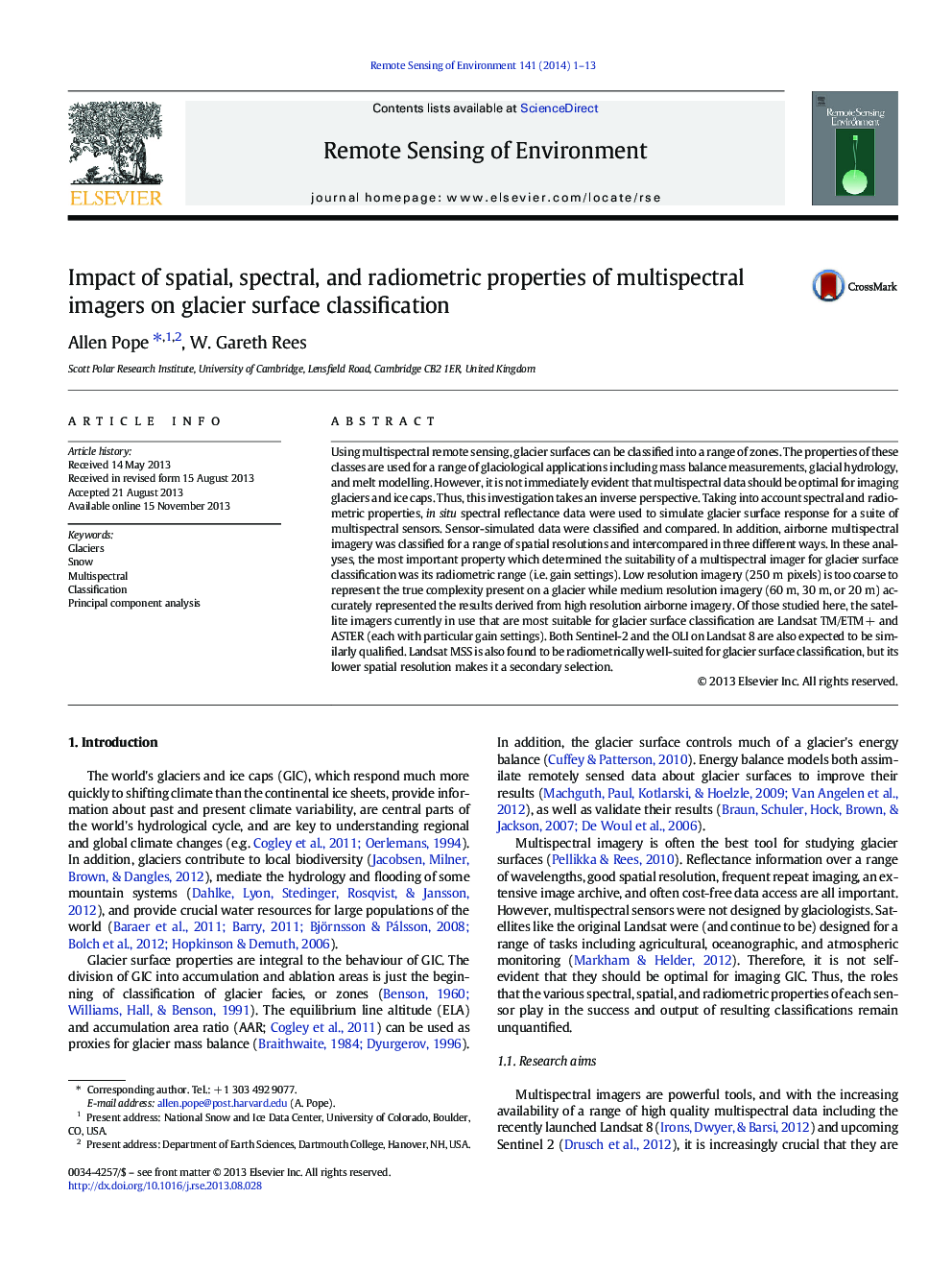| Article ID | Journal | Published Year | Pages | File Type |
|---|---|---|---|---|
| 6346807 | Remote Sensing of Environment | 2014 | 13 Pages |
Abstract
Using multispectral remote sensing, glacier surfaces can be classified into a range of zones. The properties of these classes are used for a range of glaciological applications including mass balance measurements, glacial hydrology, and melt modelling. However, it is not immediately evident that multispectral data should be optimal for imaging glaciers and ice caps. Thus, this investigation takes an inverse perspective. Taking into account spectral and radiometric properties, in situ spectral reflectance data were used to simulate glacier surface response for a suite of multispectral sensors. Sensor-simulated data were classified and compared. In addition, airborne multispectral imagery was classified for a range of spatial resolutions and intercompared in three different ways. In these analyses, the most important property which determined the suitability of a multispectral imager for glacier surface classification was its radiometric range (i.e. gain settings). Low resolution imagery (250 m pixels) is too coarse to represent the true complexity present on a glacier while medium resolution imagery (60 m, 30 m, or 20 m) accurately represented the results derived from high resolution airborne imagery. Of those studied here, the satellite imagers currently in use that are most suitable for glacier surface classification are Landsat TM/ETM + and ASTER (each with particular gain settings). Both Sentinel-2 and the OLI on Landsat 8 are also expected to be similarly qualified. Landsat MSS is also found to be radiometrically well-suited for glacier surface classification, but its lower spatial resolution makes it a secondary selection.
Related Topics
Physical Sciences and Engineering
Earth and Planetary Sciences
Computers in Earth Sciences
Authors
Allen Pope, W. Gareth Rees,
